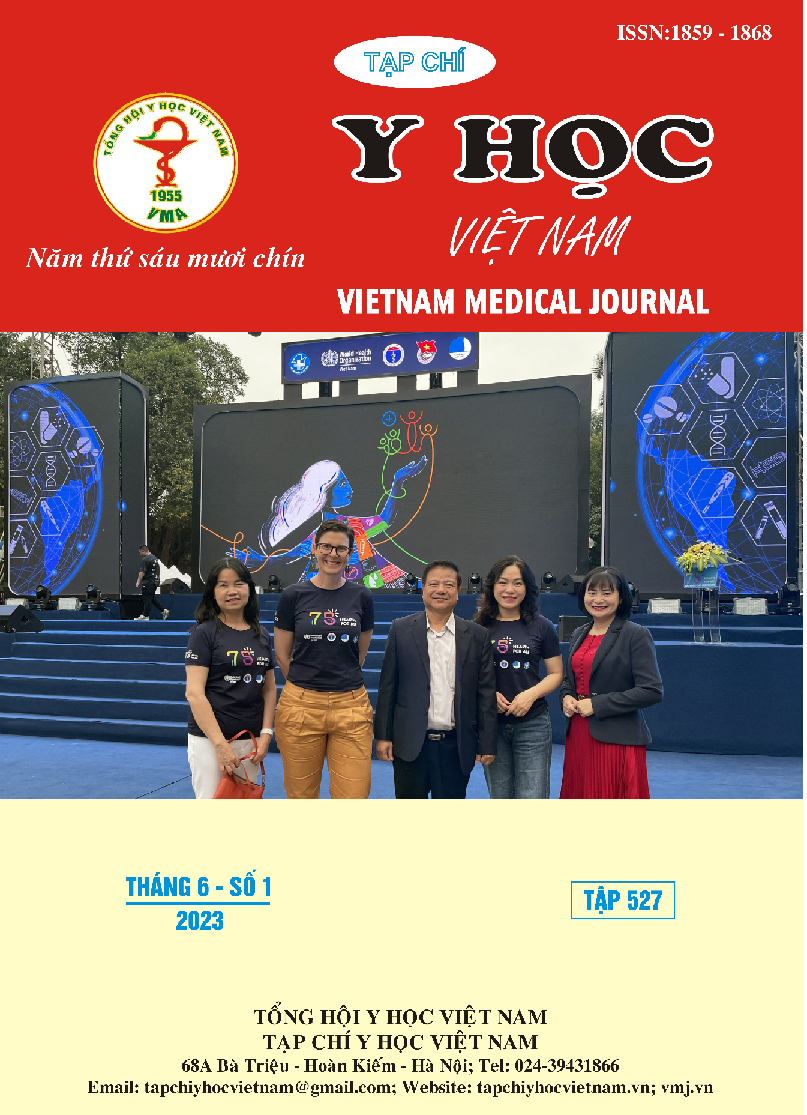SOME FACTORS RELATED TO PERIPHERAL NERVE DAMAGE IN NEWLY DIAGNOSED TYPE 2 DIABETES MELLITUS
Main Article Content
Abstract
Objective: Analyze some factors related to peripheral nerve damage in patients with newly diagnosed type 2 diabetes mellitus (DM). Subjects and methods: We studied 98 newly diagnosed type 2 diabetes patients at the Department of Endocrinology-Diabetes, and Neurology Center of Bach Mai Hospital. Results: We found abnormalities in 22.5% of patients on conduction electromyography. The motor conduction velocity of the ulnar nerve is related to sex (p<0.05). The age of the patient is related to damage to the median nerve, tibial nerve, and peroneal nerve on conduction electromyography (p<0.05, Kruskal-Wallis test, and ANOVA test) and the sural nerve was damaged with prolongation of sensory latency, conduction velocity, decrease in wave amplitude and increase with age (p<0.05). There is a relationship between the HbA1C index and abnormalities on electromyography of the superficial peroneal nerve (OR > 1, p < 0.05), and with abnormalities when measuring motor conduction of the tibial nerve, ulnar nerve, and median nerve (p < 0.05). There was no relationship between the electrophysiological index of the sural nerve and HbA1C (p > 0.05). Conclusion: The peripheral nerve damage in newly diagnosed type 2 diabetes patients is associated with age and HbA1C.
Article Details
Keywords
Diabetes, Electromyography, Nerve conduction velocity
References
2. Camacho PM, Petak SM, Binkley N, et al. American Association of Clinical Endocrinologists/ American College of Endocrinology Clinical Practice Guidelines for the diagnosis and treatment of postmenopausal osteoporosis -2020 Update. Endocr Pract Off J Am Coll Endocrinol Am Assoc Clin Endocrinol. 2020.
3. Lee YJ, Shin SJ, Wang RH, Lin KD, Lee YL, Wang YH. Pathways of empowerment perceptions, health literacy, self-efficacy, and self-care behaviors to glycemic control in patients with type 2 diabetes mellitus. Patient Educ Couns. 2016;99(2):287-294.
4. Pop-Busui R, Boulton AJM, Feldman EL, et al. Diabetic Neuropathy: A Position Statement by the American Diabetes Association. Diabetes Care. 2017;40(1):136-154.
5. Shivani Agarwal, Shveta Lukhmana et al. Nerve conduction study inneurological lyasymptomatic diabetic patients and correlation with glycosylated hemoglobinand duration of diabetes. National Journal of Physiology. Pharmacy and Pharmacology2018; 8(1):1533-1538
6. Souza RJ de, Mente A, Maroleanu A, et al. Intake of saturated and trans unsaturated fatty acids and risk of all cause mortality, cardiovascular disease, and type 2 diabetes: systematic review and meta-analysis of observational studies. BMJ. 2015;351-397.
7. Stetson DS, Albers JW, Silverstein BA, Wolfe RA. Effects of age, sex, and anthropometric factors on nerve conduction measures. Muscle Nerve. 1992;15(10):1095-1104.
8. Stratton IM, Adler AI, Neil HA, et al. Association of glycaemia with macrovascular and microvascular complications of type 2 diabetes (UKPDS 35): prospective observational study. BMJ. 2000;321(7258): 405-412.


